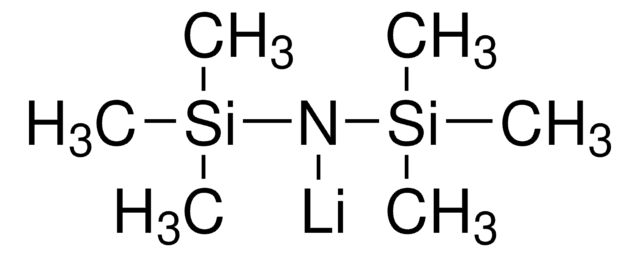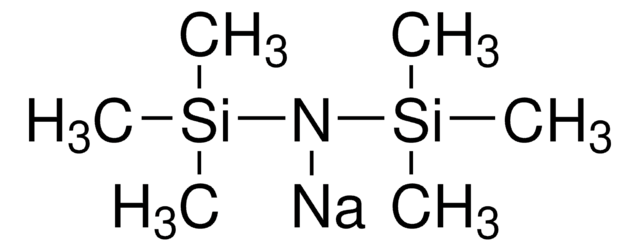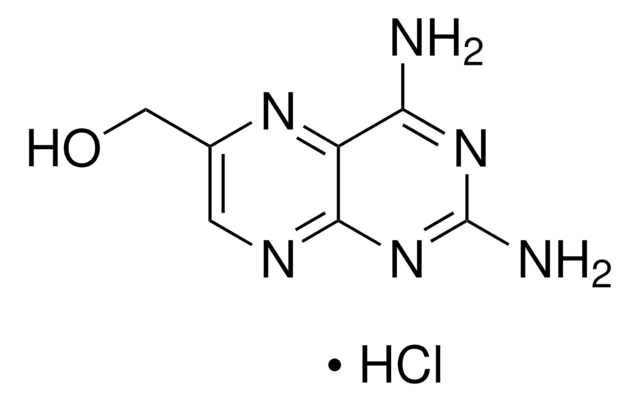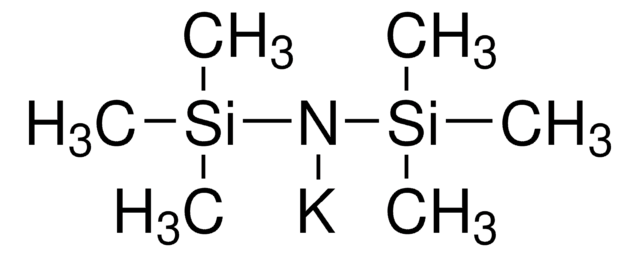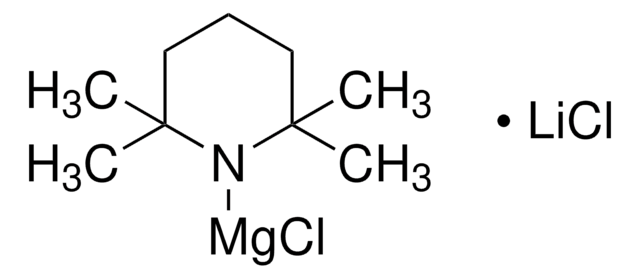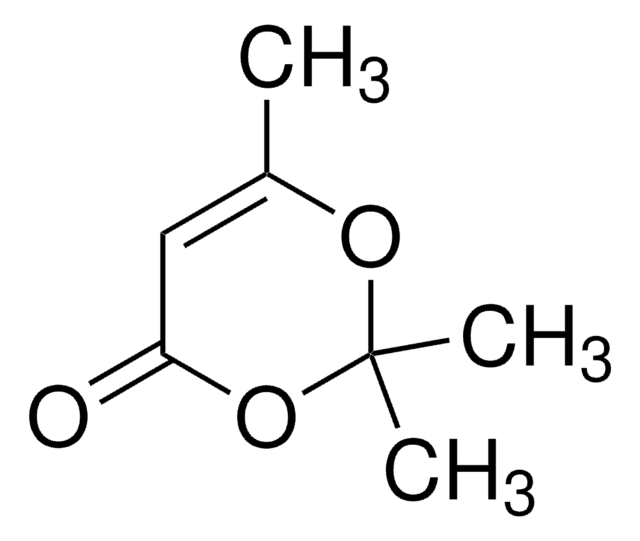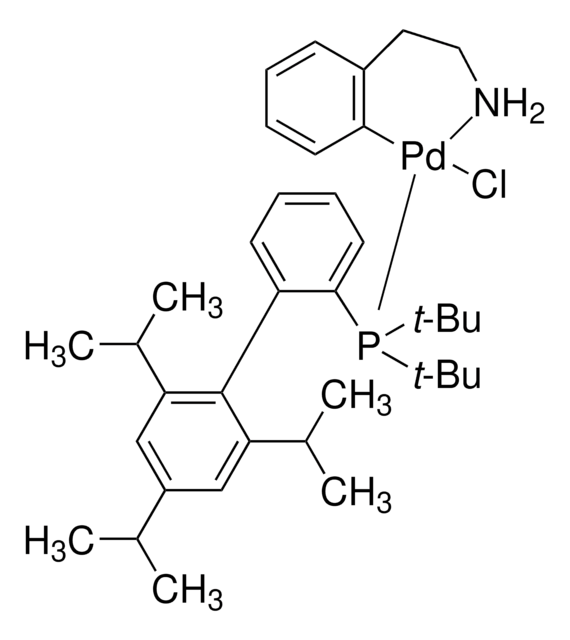577928
Lithium bis(triméthylsilyl)amide solution
1 M in toluene
Synonyme(s) :
Hexaméthyldisilazane lithium salt
About This Item
Produits recommandés
Niveau de qualité
Concentration
1 M in toluene
Densité
0.860 g/mL at 25 °C
Chaîne SMILES
[Li]N([Si](C)(C)C)[Si](C)(C)C
InChI
1S/C6H18NSi2.Li/c1-8(2,3)7-9(4,5)6;/h1-6H3;/q-1;+1
Clé InChI
YNESATAKKCNGOF-UHFFFAOYSA-N
Vous recherchez des produits similaires ? Visite Guide de comparaison des produits
Catégories apparentées
Description générale
Application
- In the deprotonation and nucleophilic difluoromethylation reactions.
- To synthesize isoquinoline derivatives by the addition of N-iodosuccinimide (NIS) to the α-benzyl tosylmethyl isocyanides.
- To prepare arylboronic acid pinacol esters by the reaction of aryl fluorides with bis(pinacolato)diboron via palladium-catalyzed cross-coupling reaction.
Mention d'avertissement
Danger
Mentions de danger
Classification des risques
Aquatic Chronic 3 - Asp. Tox. 1 - Eye Dam. 1 - Flam. Liq. 2 - Repr. 2 - Self-heat. 1 - Skin Corr. 1B - STOT RE 2 - STOT SE 3
Organes cibles
Central nervous system
Risques supp
Code de la classe de stockage
4.2 - Pyrophoric and self-heating hazardous materials
Classe de danger pour l'eau (WGK)
WGK 3
Point d'éclair (°F)
48.0 °F - closed cup
Point d'éclair (°C)
8.9 °C - closed cup
Équipement de protection individuelle
Faceshields, Gloves, Goggles, type ABEK (EN14387) respirator filter
Listes réglementaires
Les listes réglementaires sont principalement fournies pour les produits chimiques. Seules des informations limitées peuvent être fournies ici pour les produits non chimiques. L'absence d'indication signifie qu'aucun des composants n'est répertorié. Il incombe à l'utilisateur de s'assurer de l'utilisation sûre et légale du produit.
EU REACH Annex XVII (Restriction List)
Faites votre choix parmi les versions les plus récentes :
Déjà en possession de ce produit ?
Retrouvez la documentation relative aux produits que vous avez récemment achetés dans la Bibliothèque de documents.
Les clients ont également consulté
Global Trade Item Number
| Référence | GTIN |
|---|---|
| 577928-800ML | 4061837674167 |
| 577928-100ML | 4061837674150 |
Notre équipe de scientifiques dispose d'une expérience dans tous les secteurs de la recherche, notamment en sciences de la vie, science des matériaux, synthèse chimique, chromatographie, analyse et dans de nombreux autres domaines..
Contacter notre Service technique